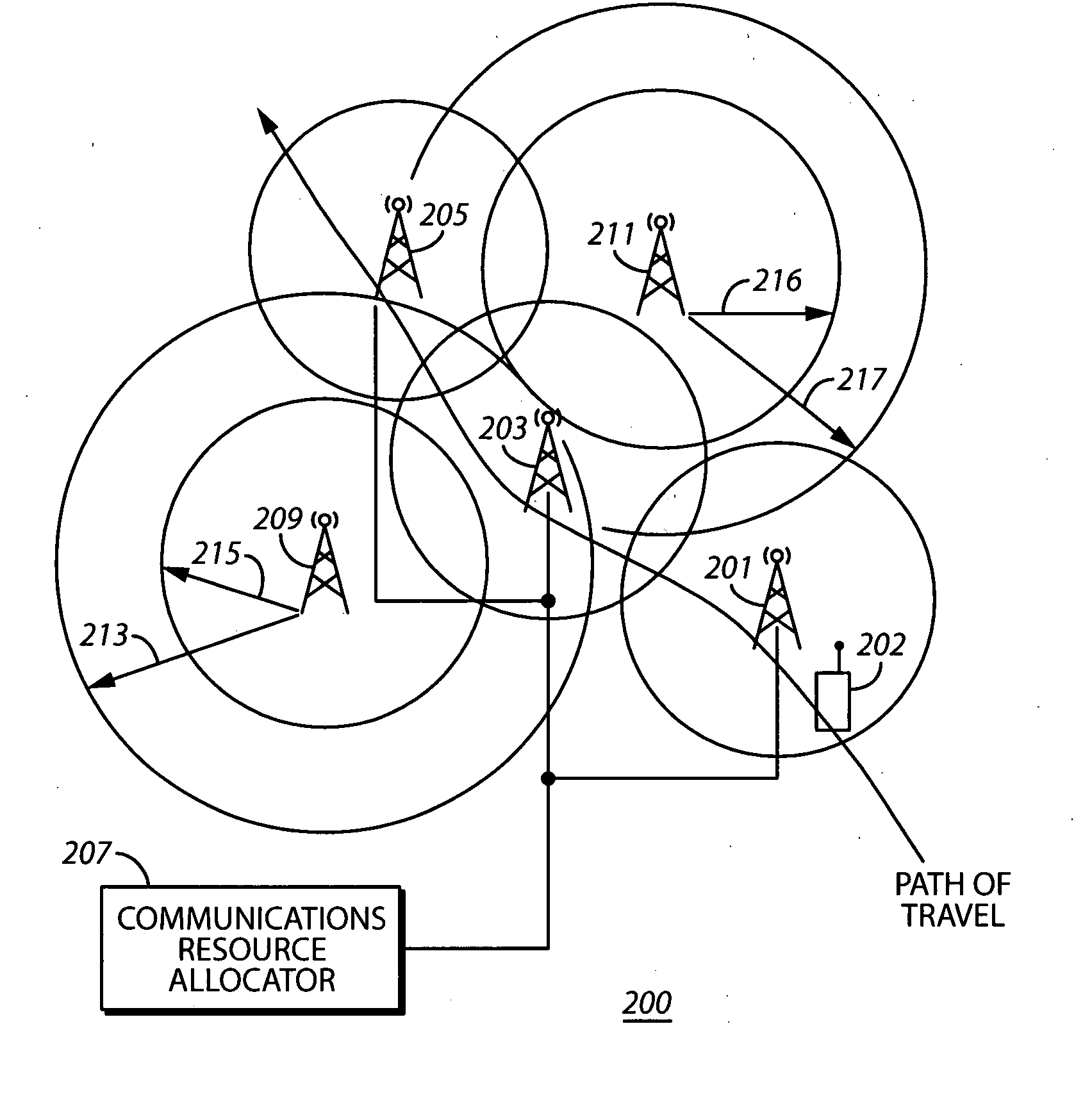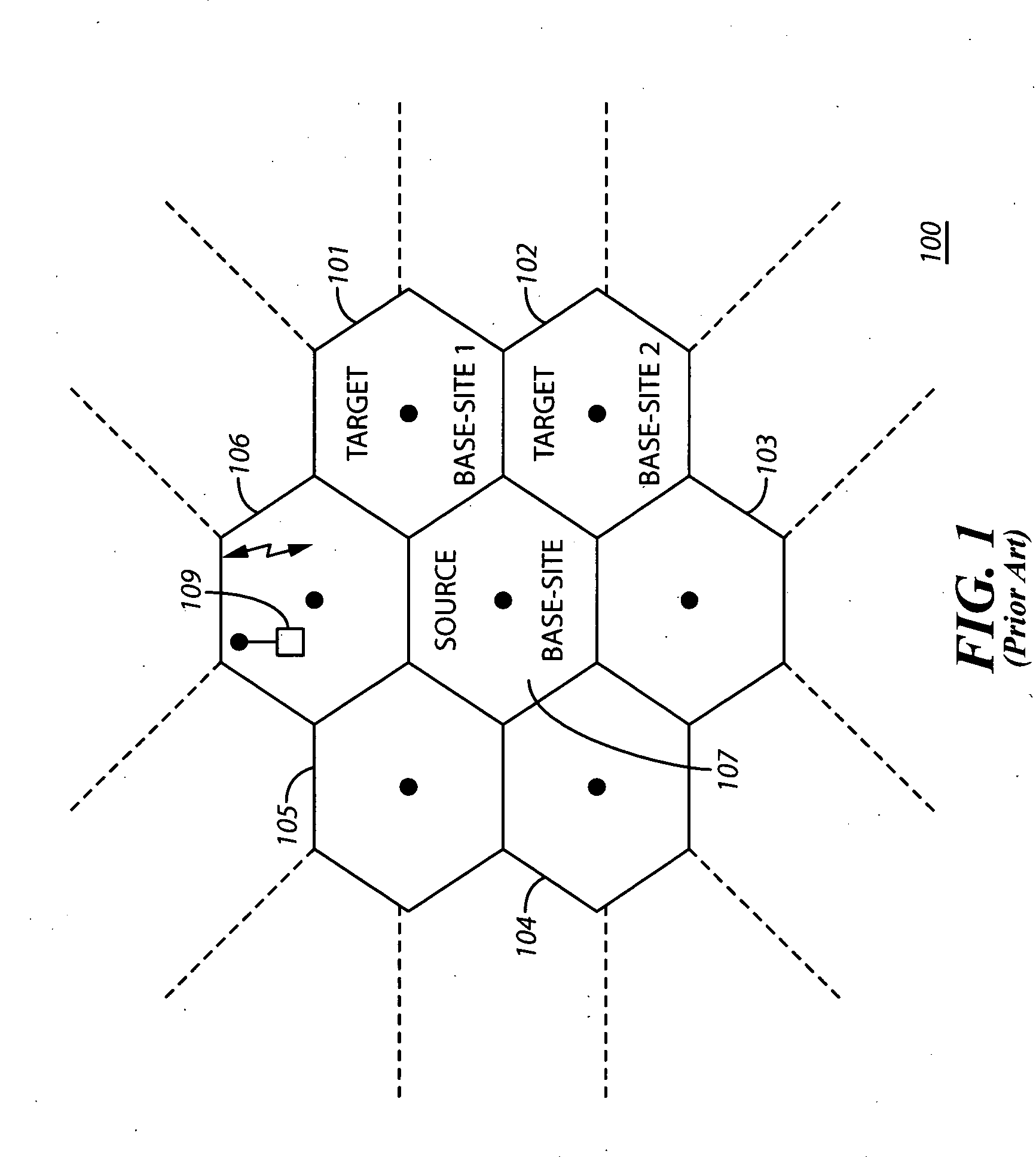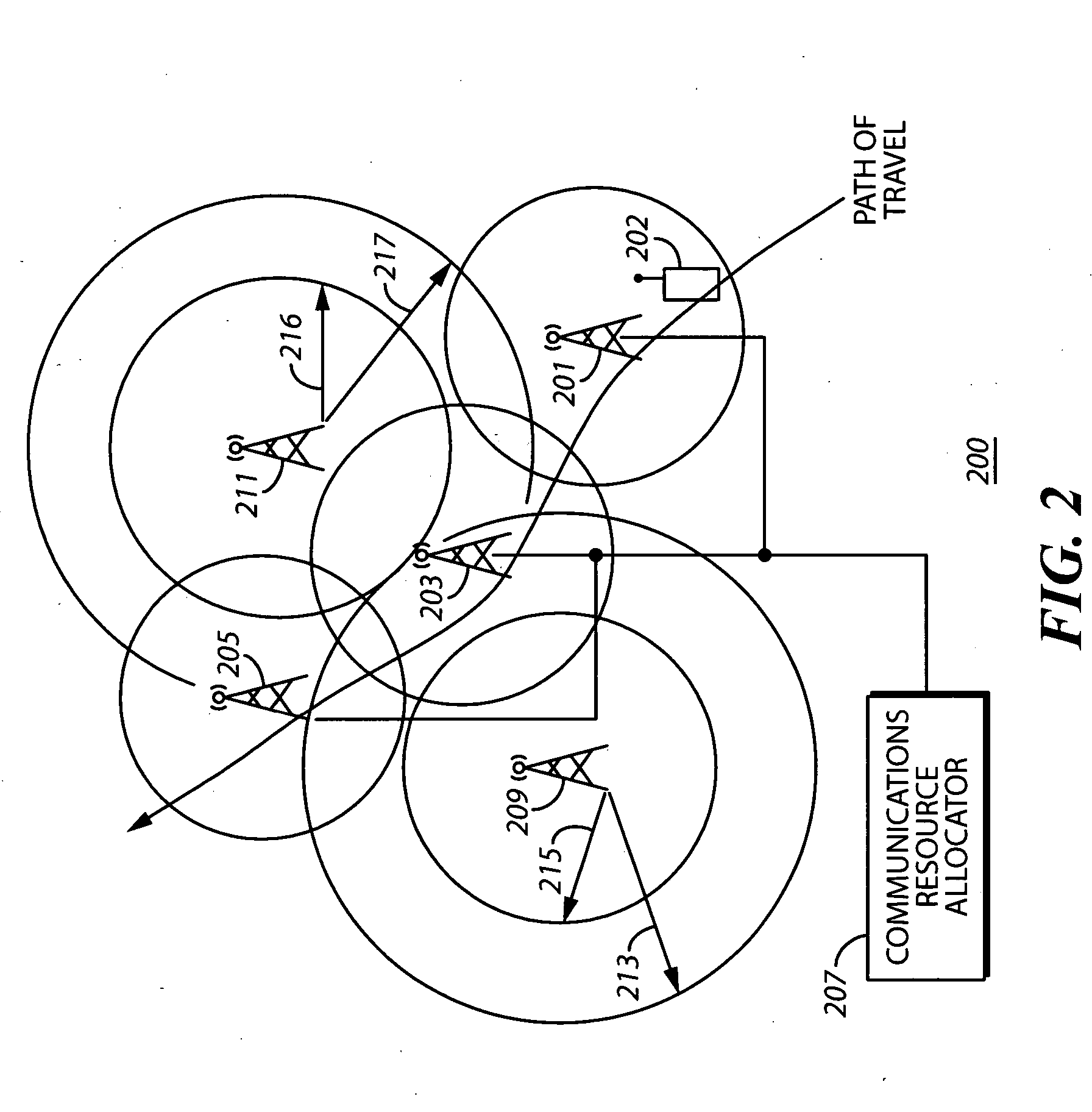Method for mitigating intermodulation interference using channel power estimation and attenuation in a two-way radio communications system
- Summary
- Abstract
- Description
- Claims
- Application Information
AI Technical Summary
Benefits of technology
Problems solved by technology
Method used
Image
Examples
Embodiment Construction
[0011] While the specification concludes with claims defining the features of the invention that are regarded as novel, it is believed that the invention will be better understood from a consideration of the following description in conjunction with the drawing figures, in which like reference numerals are carried forward.
[0012] In accordance with the present invention, a method of site selection is provided that emphasizes handset control of the selection using integrated automatic gain control (AGC) techniques to maximize IM performance and blocking performance a priori to handoff. Currently, handoff techniques between subscriber and base focus on the management of system parameters by a centralized base station. As seen in FIG. 2, as a subscriber 202 traverses through a cellular-type network 200 the handoff between cell sites 201, 203, 205 is controlled by a communications resource allocator 207. As a subscriber moves from cell site to cell site, the subscriber receiver is often...
PUM
 Login to View More
Login to View More Abstract
Description
Claims
Application Information
 Login to View More
Login to View More - R&D
- Intellectual Property
- Life Sciences
- Materials
- Tech Scout
- Unparalleled Data Quality
- Higher Quality Content
- 60% Fewer Hallucinations
Browse by: Latest US Patents, China's latest patents, Technical Efficacy Thesaurus, Application Domain, Technology Topic, Popular Technical Reports.
© 2025 PatSnap. All rights reserved.Legal|Privacy policy|Modern Slavery Act Transparency Statement|Sitemap|About US| Contact US: help@patsnap.com



